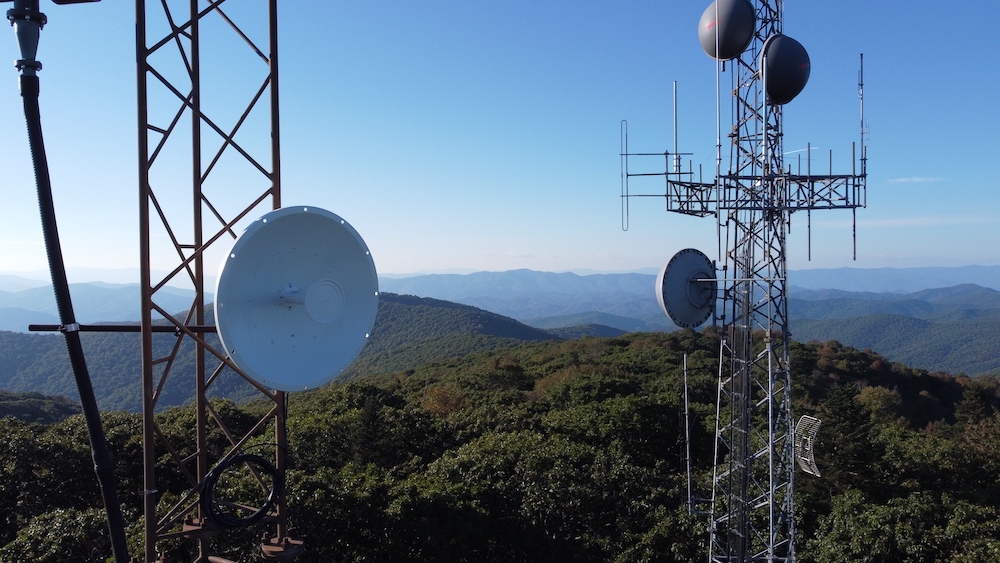Many stations packaging their own kids’ channels
With the all-digital future arriving, if haltingly, and a bigger share of viewers likely to come through DTV multicast channels, public TV stations are reconsidering how to use their bitstream, making over their channels, and in some cases adding new services to woo audiences.
The wee audience, for one.
Little kids and their parents are a vital audience and constituency for public TV, and mockups of the stations’ future DTV menu often featured a dedicated channel for them. To supply it, stations had access to a 24-hour PBS Kids feed, packaged by PBS.
That changed in 2005 when the network acceded to the desires of its two biggest producers for children and joined a partnership to package Sprout, a cable channel for preschoolers. Its senior partners were the two producers, Sesame Workshop and Hit Entertainment, plus Comcast, by far the country’s largest cable operator. The PBS Kids feed was discontinued, and most stations were not consoled by the network’s 2006 unsuccessful offer to package a channel for a smaller audience—older, school-age kids.
Around 80 licensees—about half of the national total—have signed on as promoters of Sprout and gained cross-promotional and cash benefits. But they’ve given up their option to program a competing preschool channel.
Still, most stations feature hours of preschool shows such as Curious George and Super Why! on their main channels, which is accessible in about twice as many households as Sprout. (Sprout reaches 44 million households through digital cable, satellite and phone-company delivery systems.)
Indeed, PBS urges stations to keep some of their kids’ fare on their main channels because pubTV is not yet getting ratings for the multicast channels. Also, few stations are getting underwriting revenue from the channels.
But the practice of dedicating a channel for kids—following cable TV’s successful narrowcast norm—is not dead in public TV. About half of pubTV stations are airing their own multicast kids’ channels, some only for for school-age kids, according to an informal survey of schedules by John McCarroll, g.m. at Oklahoma’s OETA.
More for kids, more for adults
Where stations created dedicated kids’ services, they can make more room for adults during the day on their primary channel, often in the afternoon when programs for older kids traditionally air. In Washington, D.C., next month, for example, WETA will cut its all-day kids’ schedule down to three hours, 6 to 9 a.m. Afternoons on its main channel will feature travel, Charlie Rose, repeats of yesterday’s primetime shows, movies, documentaries and miniseries such as the upcoming Make ’Em Laugh.
“I always disliked the idea that for half of our day we had to tell adults who are at home and want to see something else besides judge shows and soap operas that I can’t service them,” says Kevin Harris, g.m. There’s no reason to squeeze all kinds of programming into one channel and spurn adults until 5 p.m., he says.
WETA’s 2-year-old kids channel, meanwhile, is being made into its primary, 24/7 kids service. Because the station is not a Sprout partner, it’s free to program any of PBS’s kids shows anytime on any of its channels. Harris hopes to add locally produced interstitials and on-screen appearances by teachers and other community members. In the D.C. area, Maryland Public Television airs kids’ shows in the morning and WHUT airs kids shows in the afternoon, so little viewers have several options.
In the afternoon, however, MPT opts to serve grownups. About 10 years ago, it replaced afternoon kids’ programming with a Britcom block called “Afternoon Tea.” Ratings went up and held steady, says Zvi Shoubin, managing director of MPT networks. Meanwhile, the station airs kids’ programs on its MPT Select channel during the day.
In San Francisco, Sprout partner station KQED launched its school-age channel in 2003, plumping its menu of school-age programs with syndicated fare such as Zulu Patrol and Little Amadeus in addition to PBS shows. Its primary channel carried news and lifestyle programs in the afternoon, attracting slightly larger audiences, says Scott Dwyer, program director. In the Bay Area, adult shows generally get more viewers than kids shows do.
KQED wanted to start multicasting about the same time Comcast wanted to promote its free digital offerings, Dwyer says. The good relationship between the two—and Comcast’s monopoly in the market—guaranteed good carriage for both Sprout and KQED’s kids channel, according to Dwyer.
For children’s caregivers, a dedicated 24-7 kids channel is something they can count on, says Susie Hernandez, TV program director at Arizona Public Media in Tucson. The station has been operating a kids channel since 2003, and viewers like being able to catch the same program at the same hour, seven days a week, she says.
Juggling bandwidth and finances
Though added runs of PBS children’s programs usually don’t require new rights payments, not every station has the budget, staff time, available bitstream or digital compression equipment to start an all-kids channel. When OETA created one a few years ago, execs looked forward to offering more adult daytime shows and earning donor goodwill with a kids’ service. The state legislature was excited about the new channel, says John McCarroll, g.m. But when high-def programming came down the pike, OETA decided it could squeeze only one HD channel and one standard-def channel into its DTV broadcast, he says.
OETA kept the channel alive on cable, however—in Oklahoma City and Tulsa, where most of the state’s population lives. Cox Cable carries the kids service as well as pubTV’s packaged lifestyle channel, Create. Over the air, the network offers its primary channel in HD—with kids programs—and its Oklahoma channel, which features programs about the state and some kids shows during the day. One downside: tying down the weekends on the main channel, which would be a great time to pull in adults, McCarroll says.
With automation systems and digital storage that make it easy to retrieve and queue up programs for broadcast, assembling a 24-hour channel is far cheaper than it used to be. And the latest digital compression systems enable stations to fill their broadcast capacity with an HD stream plus many as three standard-def channels.
But when stations can’t air a children’s multicast channel simply by passing through a satellite feed to their transmitters, they still face some significant costs for automation equipment and staffing. In San Francisco, KQED assigns a staffer to manage underwriting spots and other break materials for the kids channel and the station’s World and Life channels, Dwyer says. In Oklahoma, OETA has added four new employees to handle traffic, engineering and master control operations, and they’ve bought equipment such as decoders and encoders for each channel they transmit. These additions cost more than $213,000 this fiscal year, Carroll says.
Dwyer thinks stations are looking for more ready-to-go services such as Create that cost them less and don’t require more staff, particularly with the grim economy. Another cost-saving option: In New York state, pubcasters pooled resources to package a statewide kids channel.
At WETA, technical infrastructure was the biggest part of the stations’s outlays to to operate digital channels, says Harris. Once the gear is in place, the cost is minimal, he contends. WETA saves money by reusing the kids’ promos and interstitials from its main channel, for example.
The cost of putting attractive adult fare in the afternoons may be prohibitive, too. As Dwyer points out, stations with shrinking budgets may need to save funds to buy primetime offers instead of the Britcoms MPT relies on. MPT’s Shoubin says he’s always nervous about what money will be available for acquisitions for afternoon schedule. Luckily, viewers are eager to watch reruns of Keeping Up Appearances.
The Nielsen factor
To pay for their kids’ channels, some stations find it’s an uphill climb to sell underwriting: They have no Nielsen audience estimates to show funders. Getting numbers would require them to pay higher fees to the ratings company, and stations may doubt their little multicast offshoots are getting enough viewers to be measurable in a Nielsen survey.
Because the Bay Area isn’t a kids’ market, Dwyer was surprised when Nielsen recently told KQED its kids channel was close to hitting the threshold of measurability. But the station isn’t making any plans to order audience data on the channel yet. With Nielsen’s system in flux, it’s unclear what the extra cost might be, Dwyer says.
Without ratings on stations’ multicast channels, PBS cautions stations not to move all kids programming to a digital channel. “Those audiences will go uncounted by Nielsen, which will likely lead to the inability to attract quality producers to PBS, diminished investment from other sources (advances against ancillary products and home video) and lower underwriting revenues,” Leslie Rotenberg, senior v.p. of children’s media at PBS, wrote in an e-mail to Current.
Rotenberg also worries that fewer kids shows on primary channels could diminish PBS’s ability to reach all children, particularly the most disadvantaged. Such reach “is critical to guarantee continued philosophical and financial support from government, foundation and corporate stakeholders at the national and local levels,” and “to leverage our stations’ investment against a greater share of ancillary revenues from hit children’s series,” she wrote.
In addition, PBS has sunk a considerable sum into researching the best flow and producing interstitials for the PBS Kids (preschool) and PBS Kids Go! (school-age) blocks it feeds stations through the National Program Service.
Harris understands PBS’s concern, but “they don’t run a local television station,” he says. His primary goal for kids programming is to provide the best service to the local community, not to get the best national ratings.
“At this point in time, with the system changing, Nielsen doesn’t know what they’re doing,” he adds, and stations shouldn’t make decisions based on what or how Nielsen will measure things, he says—they should take advantage of the opportunity to do more. “Nielsen will catch up later,” he says.
Pubcasters are hopeful that their multicast audience will grow, particularly over-the-air. Those viewers are traditionally the biggest PBS fans, and when they’re forced to get a converter box or new TV to watch Antiques Road Show—or Curious George—they’ll also discover a new world of digital channels. This may siphon some of the audience of primary channels, says Dwyer, but there’s a greater chance that viewers will be watching public TV. Of course, viewers who opt for cable will have many more commercial options.
All the smart people in public TV want to over-think what could happen after the digital transition, says Harris, but he’s done with that: “I think we have done as much as we can with as much as we know.”








This is totally awesome!!! Also ‘GBH on Boston has a kids channel.